-
 Bitcoin
Bitcoin $105,953.9980
3.06% -
 Ethereum
Ethereum $2,445.3292
6.68% -
 Tether USDt
Tether USDt $1.0006
-0.03% -
 XRP
XRP $2.1968
7.03% -
 BNB
BNB $643.2903
2.13% -
 Solana
Solana $144.2799
3.82% -
 USDC
USDC $1.0000
-0.03% -
 TRON
TRON $0.2739
0.49% -
 Dogecoin
Dogecoin $0.1642
4.47% -
 Cardano
Cardano $0.5834
5.49% -
 Hyperliquid
Hyperliquid $38.0741
2.80% -
 Sui
Sui $2.7741
7.56% -
 Chainlink
Chainlink $13.4107
11.26% -
 Bitcoin Cash
Bitcoin Cash $450.4828
-0.61% -
 UNUS SED LEO
UNUS SED LEO $9.1301
0.64% -
 Stellar
Stellar $0.2476
5.49% -
 Avalanche
Avalanche $18.0637
5.09% -
 Toncoin
Toncoin $2.9066
2.43% -
 Shiba Inu
Shiba Inu $0.0...01160
4.01% -
 Hedera
Hedera $0.1527
8.00% -
 Litecoin
Litecoin $84.6122
2.37% -
 Monero
Monero $317.6076
5.76% -
 Ethena USDe
Ethena USDe $1.0008
0.02% -
 Polkadot
Polkadot $3.4519
5.27% -
 Dai
Dai $1.0000
-0.03% -
 Bitget Token
Bitget Token $4.2835
5.62% -
 Uniswap
Uniswap $7.0443
9.78% -
 Pepe
Pepe $0.0...09964
7.41% -
 Pi
Pi $0.5391
4.64% -
 Aave
Aave $264.1743
11.26%
How to operate when the volume and price fall together but the RSI indicator forms a bottom divergence?
An RSI bottom divergence occurs when price hits a new low but RSI forms a higher low, signaling potential bullish reversal despite falling volume and price.
Jun 25, 2025 at 04:29 am
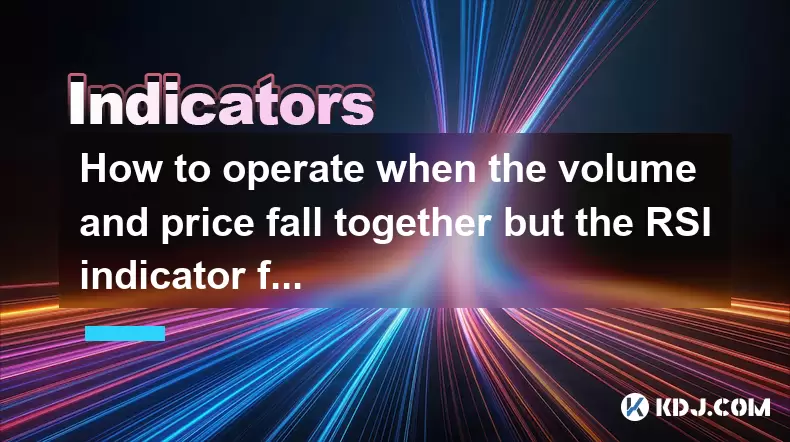
Understanding the Concept of RSI Bottom Divergence
When analyzing cryptocurrency price charts, traders often rely on technical indicators to spot potential reversals. One such signal is a bottom divergence in the Relative Strength Index (RSI). This occurs when the price makes a new low, but the RSI does not confirm that low and instead forms a higher low. In this context, even if both volume and price are falling, an RSI bottom divergence can indicate hidden strength or accumulation by smart money.
This phenomenon suggests that selling pressure may be weakening despite the continued decline in price and volume. Traders should pay close attention to this setup because it may precede a bullish reversal.
Recognizing the Scenario: Price, Volume, and RSI Behavior
In this particular scenario, three key elements are at play:
- Price is declining: The asset's value continues to fall, often triggering panic among retail investors.
- Volume is also decreasing: Lower trading volume indicates reduced interest or participation from market participants.
- RSI shows a bottom divergence: Despite the falling price, the RSI starts forming higher lows, signaling a potential shift in momentum.
This combination might seem contradictory at first glance. However, in crypto markets where volatility is high and sentiment shifts rapidly, such patterns are common during accumulation phases. It’s crucial to understand that while volume and price are trending downward, the RSI divergence could point to early signs of institutional or whale buying activity.
Steps to Confirm the Validity of the Divergence Signal
Before taking any action, it’s important to verify whether the observed divergence is valid and likely to lead to a meaningful price move. Here’s how you can do that:
- Compare swing lows on the price chart with corresponding RSI values: Ensure that each subsequent price low is accompanied by a higher RSI reading.
- Use multiple timeframes: Check for divergence on higher timeframes like 4-hour or daily charts to filter out noise from short-term fluctuations.
- Observe candlestick patterns near support levels: Look for bullish reversal candles such as hammers, engulfing patterns, or morning stars near critical support zones.
- Monitor volume behavior closely: Even though volume is generally declining, watch for sudden spikes or increases that may indicate increased buying pressure.
- Cross-check with other indicators: Use tools like MACD or moving averages to confirm the RSI signal and avoid false positives.
These steps help ensure that the divergence isn’t just a temporary fluctuation but part of a more significant trend change.
Entry Strategies When Facing a Divergence Setup
Once confirmation is in place, traders can begin planning their entry points. Here are some effective strategies:
- Wait for a breakout above the recent resistance level: This confirms that the downtrend has been broken and gives a clear signal to enter long.
- Use limit orders near support zones: If the price revisits a prior swing low or a key support area where divergence was previously observed, placing a buy order there can offer better risk-reward ratios.
- Apply Fibonacci retracement levels: Identify key retracement levels where price might reverse and align those with RSI divergence zones for higher probability entries.
- Combine divergence with volume surges: Enter only when volume picks up significantly after a period of contraction, indicating renewed demand.
- Set stop-loss below the most recent swing low: Protect your position in case the divergence fails and the downtrend resumes.
Each of these methods provides a structured way to take positions without overcommitting capital prematurely.
Risk Management Considerations in Divergence Trading
Trading divergence setups carries inherent risks, especially in volatile crypto markets. Proper risk management is essential to preserve capital and stay in the game long enough to benefit from successful trades.
- Limit position size: Never risk more than 1–2% of your total portfolio on a single trade.
- Use tight stop losses: Place them just below the divergence zone or recent swing low to minimize losses if the pattern fails.
- Avoid emotional trading: Stick to your predefined strategy regardless of market noise or FOMO-driven price spikes.
- Track open trades actively: Monitor how the price reacts after entry and adjust exits accordingly based on new information or changing conditions.
- Maintain a trading journal: Record every trade involving divergence, including the reasoning, outcome, and lessons learned for future reference.
By adhering to strict risk parameters, traders can navigate the uncertainty associated with divergence setups more confidently.
Frequently Asked Questions (FAQs)
Q: What timeframe is best for identifying RSI divergence in crypto trading?
A: While divergence can appear on any timeframe, higher timeframes such as 4-hour or daily charts tend to provide more reliable signals due to reduced market noise and stronger confirmation power.
Q: Can RSI divergence occur during uptrends too?
A: Yes, divergence can also form during uptrends—this is known as a top divergence. In this case, the price makes a higher high while RSI makes a lower high, signaling potential weakness and possible reversal.
Q: How accurate is RSI divergence as a standalone indicator?
A: RSI divergence alone isn’t foolproof and can produce false signals. It works best when combined with other tools like candlestick analysis, volume profiles, and moving averages to increase its predictive accuracy.
Q: Is divergence more common in certain cryptocurrencies?
A: Divergence appears across all crypto assets but tends to be more pronounced in highly liquid and frequently traded coins like Bitcoin and Ethereum due to deeper order books and clearer price action.
Disclaimer:info@kdj.com
The information provided is not trading advice. kdj.com does not assume any responsibility for any investments made based on the information provided in this article. Cryptocurrencies are highly volatile and it is highly recommended that you invest with caution after thorough research!
If you believe that the content used on this website infringes your copyright, please contact us immediately (info@kdj.com) and we will delete it promptly.
- Stablecoins, Blockchain Games, and NxtNexus: A Deep Dive
- 2025-06-25 10:25:13
- Children: Yesterday, Today, and Tomorrow's Promise
- 2025-06-25 10:45:13
- £1 Coin: Valuable Finds and Expert Tips for Collectors
- 2025-06-25 11:05:13
- XRP, Ripple, Legal Saga: Navigating Uncertainty with Stablecoin Strategies
- 2025-06-25 10:52:16
- Dogwifhat (WIF) Price Prediction: Will the Hat Stay On?
- 2025-06-25 10:55:12
- Crypto Liquidations Plummet: Time to Buy Today?
- 2025-06-25 08:25:12
Related knowledge
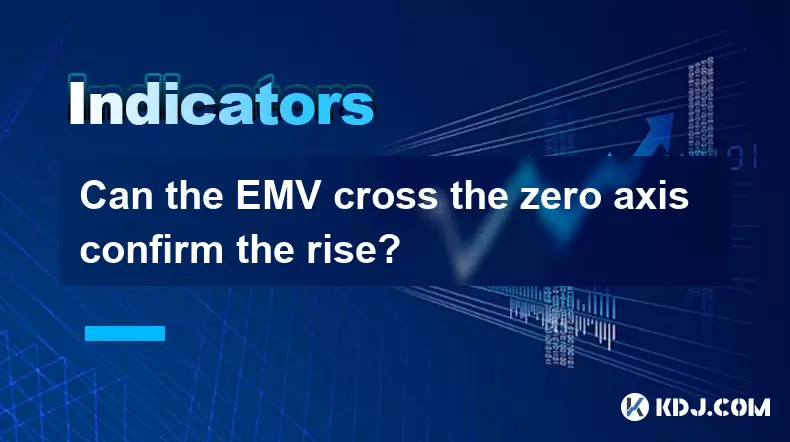
Can the EMV cross the zero axis confirm the rise?
Jun 25,2025 at 11:14am
Understanding the EMV Indicator in Cryptocurrency TradingThe Ease of Movement Value (EMV) is a technical analysis indicator commonly used by traders to assess the relationship between price and volume. In the cryptocurrency market, where volatility is high and trends can reverse quickly, understanding how to interpret EMV becomes crucial for making info...
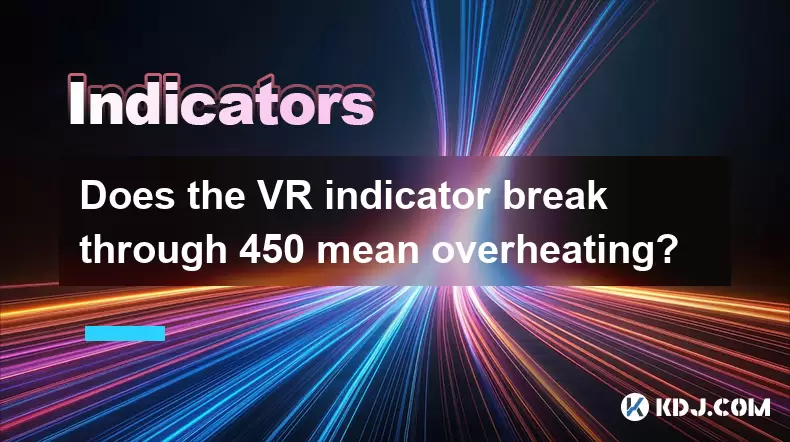
Does the VR indicator break through 450 mean overheating?
Jun 25,2025 at 10:15am
Understanding the VR Indicator in Cryptocurrency AnalysisThe VR indicator, or Volume Ratio, is a technical analysis tool used to assess buying and selling pressure by comparing the volume of up days to down days over a specified period. In cryptocurrency trading, where volatility is high and sentiment shifts rapidly, the VR indicator helps traders ident...

Should we exit the market when the TSI indicator forms a head and shoulders top pattern in the overbought zone?
Jun 25,2025 at 10:50am
Understanding the TSI Indicator and Its Relevance in Cryptocurrency TradingThe True Strength Index (TSI) is a momentum oscillator commonly used by traders to identify overbought or oversold conditions in financial markets, including cryptocurrencies. It is calculated using double smoothing of price changes, which helps filter out noise and provides more...
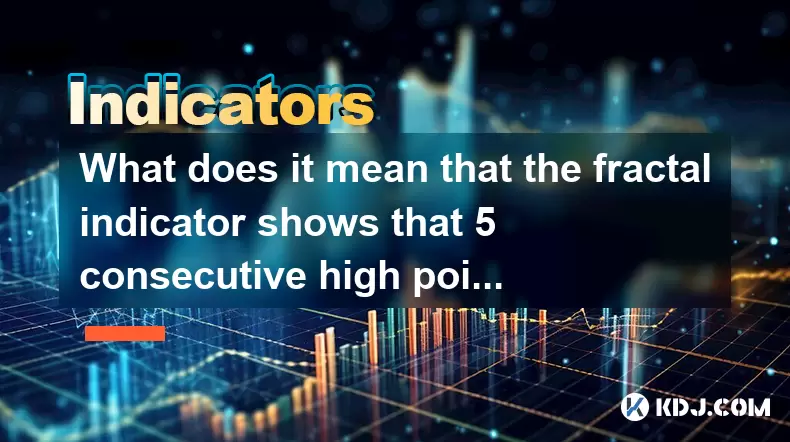
What does it mean that the fractal indicator shows that 5 consecutive high points are gradually rising?
Jun 25,2025 at 11:07am
Understanding the Fractal Indicator in Cryptocurrency TradingThe fractal indicator is a popular technical analysis tool used by traders in the cryptocurrency market to identify potential reversal points in price action. It is based on a mathematical concept known as fractals, which are repeating patterns that occur across different time frames. In tradi...

How to operate when the volume and price fall together but the RSI indicator forms a bottom divergence?
Jun 25,2025 at 04:29am
Understanding the Concept of RSI Bottom DivergenceWhen analyzing cryptocurrency price charts, traders often rely on technical indicators to spot potential reversals. One such signal is a bottom divergence in the Relative Strength Index (RSI). This occurs when the price makes a new low, but the RSI does not confirm that low and instead forms a higher low...
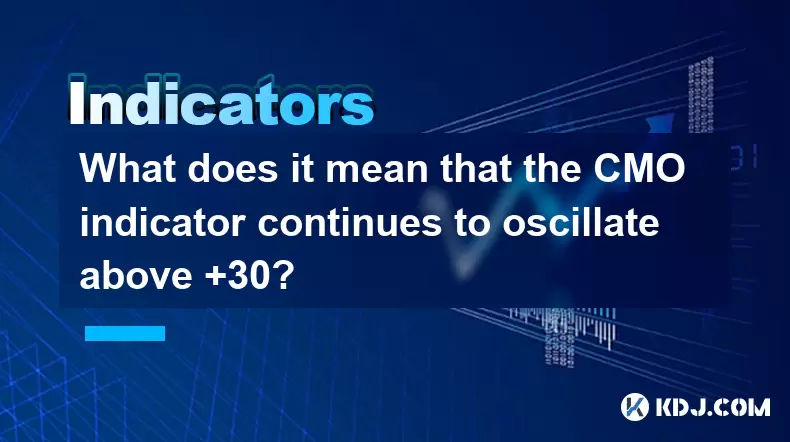
What does it mean that the CMO indicator continues to oscillate above +30?
Jun 25,2025 at 03:29am
Understanding the CMO IndicatorThe Chande Momentum Oscillator (CMO) is a technical analysis tool developed by Tushar Chande to measure momentum in financial markets. In cryptocurrency trading, the CMO helps traders identify overbought or oversold conditions and potential trend reversals. The oscillator ranges from -100 to +100, with values above zero in...

Can the EMV cross the zero axis confirm the rise?
Jun 25,2025 at 11:14am
Understanding the EMV Indicator in Cryptocurrency TradingThe Ease of Movement Value (EMV) is a technical analysis indicator commonly used by traders to assess the relationship between price and volume. In the cryptocurrency market, where volatility is high and trends can reverse quickly, understanding how to interpret EMV becomes crucial for making info...

Does the VR indicator break through 450 mean overheating?
Jun 25,2025 at 10:15am
Understanding the VR Indicator in Cryptocurrency AnalysisThe VR indicator, or Volume Ratio, is a technical analysis tool used to assess buying and selling pressure by comparing the volume of up days to down days over a specified period. In cryptocurrency trading, where volatility is high and sentiment shifts rapidly, the VR indicator helps traders ident...

Should we exit the market when the TSI indicator forms a head and shoulders top pattern in the overbought zone?
Jun 25,2025 at 10:50am
Understanding the TSI Indicator and Its Relevance in Cryptocurrency TradingThe True Strength Index (TSI) is a momentum oscillator commonly used by traders to identify overbought or oversold conditions in financial markets, including cryptocurrencies. It is calculated using double smoothing of price changes, which helps filter out noise and provides more...

What does it mean that the fractal indicator shows that 5 consecutive high points are gradually rising?
Jun 25,2025 at 11:07am
Understanding the Fractal Indicator in Cryptocurrency TradingThe fractal indicator is a popular technical analysis tool used by traders in the cryptocurrency market to identify potential reversal points in price action. It is based on a mathematical concept known as fractals, which are repeating patterns that occur across different time frames. In tradi...

How to operate when the volume and price fall together but the RSI indicator forms a bottom divergence?
Jun 25,2025 at 04:29am
Understanding the Concept of RSI Bottom DivergenceWhen analyzing cryptocurrency price charts, traders often rely on technical indicators to spot potential reversals. One such signal is a bottom divergence in the Relative Strength Index (RSI). This occurs when the price makes a new low, but the RSI does not confirm that low and instead forms a higher low...

What does it mean that the CMO indicator continues to oscillate above +30?
Jun 25,2025 at 03:29am
Understanding the CMO IndicatorThe Chande Momentum Oscillator (CMO) is a technical analysis tool developed by Tushar Chande to measure momentum in financial markets. In cryptocurrency trading, the CMO helps traders identify overbought or oversold conditions and potential trend reversals. The oscillator ranges from -100 to +100, with values above zero in...
See all articles
























































































